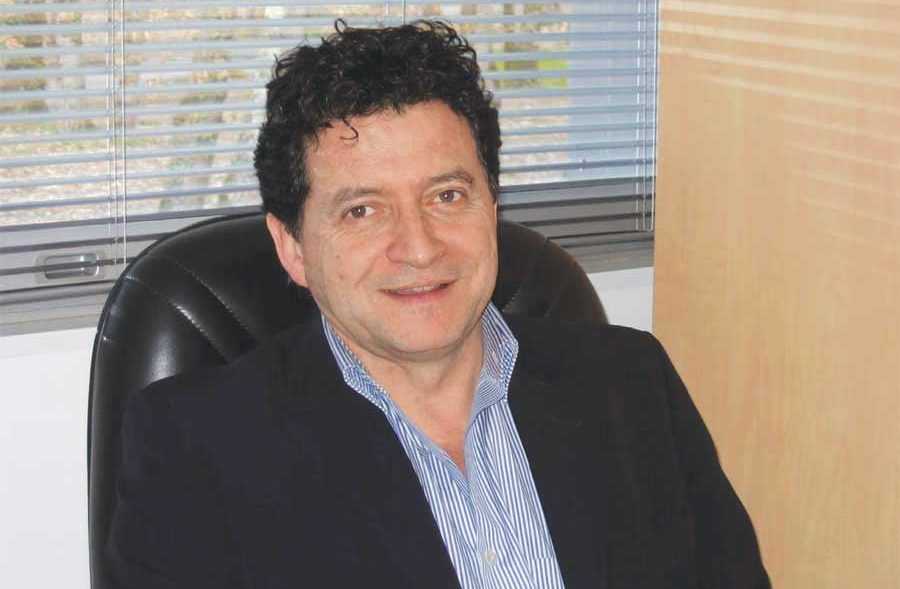
The use of IT solutions in R&D and manufacturing has added an edge to the process in all industries. The same is true for footwear, which has moved beyond the cobblers shop into the domain of high-tech machines for both mass products and fashion footwear. Lectra, a well known name in integrated technology solutions (software, CAD/CAM equipment and associated services) dedicated to industries using soft materials: textiles, leather, industrial fabrics and composite materials has solutions that encompass business processes enabling companies to automate, streamline, and accelerate product design, development and manufacturing.
Philippe Albert, Business Developer Footwear & Leather Goods, Lectra, talked to StitchWorld on the challenges facing the Footwear Industry in finding cost-effective methods to provide quality fit, innovative designs and quick delivery. Professionals in the footwear and fashion accessories industries face numerous challenges such as increasingly complex product development, demand for permanent collections renewal, and geographically separated creative and production teams. Only technology can provide an adapted response.
SW: What is the range of solutions available with Lectra for the Footwear Industry?
Philippe : With Romans CAD Software suite and its range of automated cutters, Lectra provides solutions that manage the entire product development chain, from design to merchandising spreading and cutting of increasingly costly materials. Companies in the Footwear Industry are fast getting enveloped into the ever-increasing globalization of the product development lifecycle. Lectra provides solutions for the Footwear Industry to help shorten production cycles from design to marketing, to reduce the number and cost of prototypes and to achieve real-time management and sharing of all product-related technical data. Lectra’s cutting solutions provide the technology to process complex and costly materials.
The Lectra range of solutions dedicated to the Footwear Industry includes:
Romans CAD solution that optimize and accelerate the product development cycle from design to market, reduce the number and cost of prototypes, and manage and share all technical data associated with the products in real time and enable efficient material use.
The most advanced and finely tuned range of automated cutters for the cutting of leather and other complex and costly materials, that includes:
A large range of solution for cutting leather in production, or for limited series prototyping
The new VectorFashion range for multi-ply cutting
SW: Since the Footwear Industry cut fabric for uppers by Hydraulic presses, how do you think the automatic cutters can help and bring more advantages to the industry?
Philippe: Automatic cutters with automatic nesting for fabric uppers bring consistency in the dimension of the pieces independently of the number of plies cut. The advantages are many, some of which include more plies cut at the same time, quality of the cutting edge, flexibility for the cutting room organization, quick response time for the orders, material savings (between 5 to 8%) and thus cost savings. Further, the more expensive is the fabric; faster will be the ROI (from 8 to 24 months).
Besides these, another important advantage is the storage of technical knowhow/data over time so that there is no breakage in operations when there is a change of technical operator. The next person can take over in no time as the knowhow remains with the company not the operator or pattern maker. Also important is the time saved at both the sample and production stage more so as global sourcing needs are increasingly being brought on to one digital collaborative platform to meet fast fashion requirements, while also saving on development cost.
SW: How do you measure output (and then productivity) of any CAD operator and what are the benchmarks in this area?
Philippe : We measure output of an operator from the number of new models/designs (not the variants of an existing one) from their sketch to their pattern with sizes grading, the operator is able to produce in a day. As yet there is no formal benchmark in productivity levels in the CAD industry. We have seen at design centres in China equipped with Romans CAD 2D Expert, a productivity of six to nine new models patterned with grading by day, instead of the standard two new models with the manual process. In case of the revision of a pattern, the difference in time is huge. Grading is very fast, just a few seconds, after you have finished creating a pattern of a basic size in the computer. There is also a very simple solution for only grading, based on the scan (with standard scanner) of the existing paperboard basic size patterns.
SW: Are Indian manufacturers switching over to CAD/CAM systems? What solutions are most popular in India?
Philippe: Lectra serves 20,000 customers in more than 100 countries; India is one of the growing markets for us. Here the software solutions have a bigger market than the hardware and of them pattern making solutions are the most popular. Companies in India still need to be educated on the advantages of the hardware and the cost puts off most, so it is difficult to sell complete sets and we are concentrating more on software solutions. However, many big export houses and brands are using sophisticated 3D processes also, but the numbers are limited.
SW: What critical elements differentiate your solutions from comparable solutions available in the market?
Philippe: Our biggest advantage is that we are a global solution provider and not just a stand-alone CAD provider. We manage data on a global platform and our PDM is linked to individual company ERP systems for quick implementations. It is in fact our range of services and solutions that differentiate us from other CAD/CAM providers. Further, we have a strong R&D, which is constantly evolving solutions to meet any new challenge that the shoe industry keeps throwing up.

Post a Comment